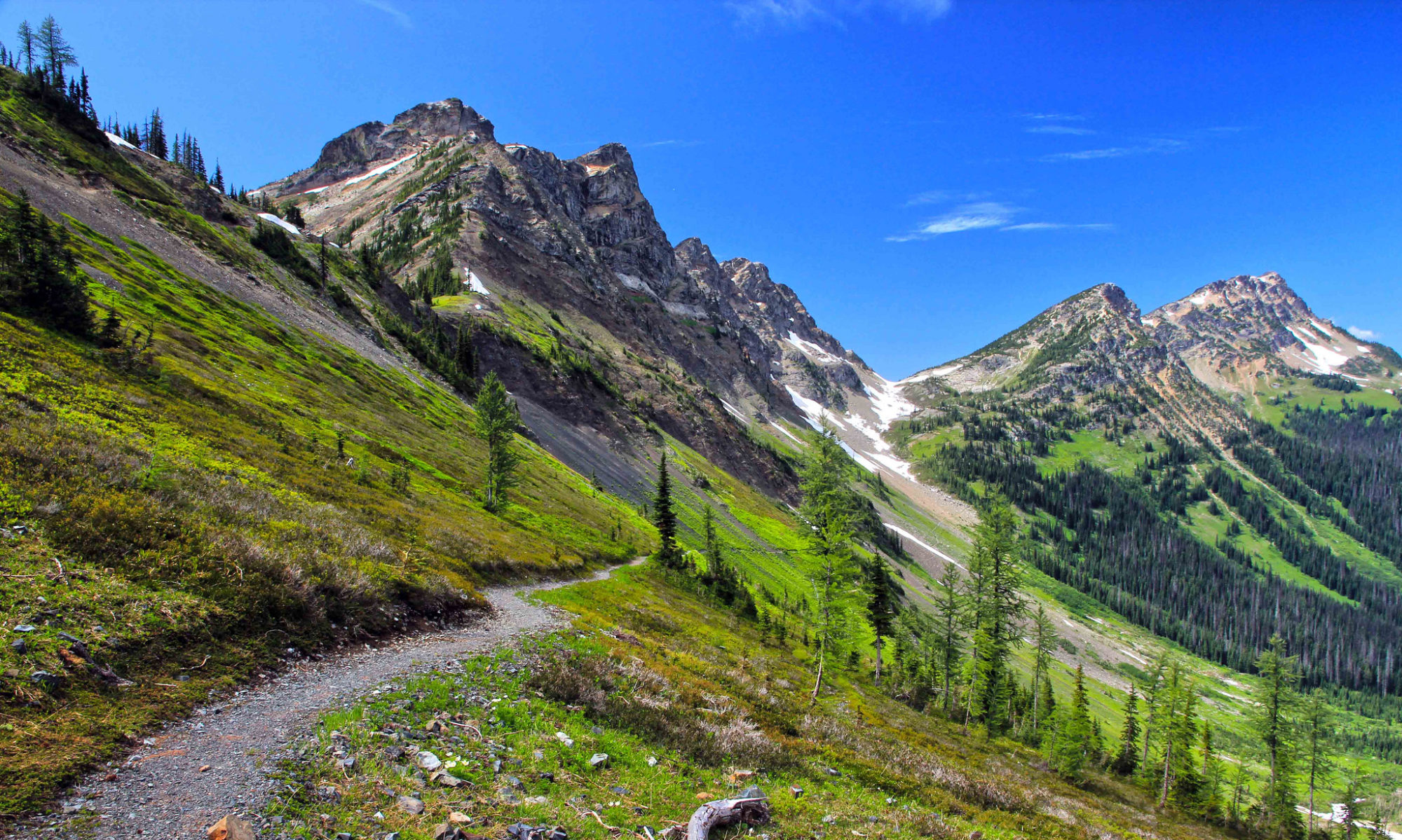Climbing Mount Everest is a feat so enormous, so dangerous, so daunting, that few people consider it, much less actually do it. Yet more people have scaled Mount Everest, the world’s tallest mountain, than thru-hiked America’s Pacific Crest Trail. How can that possibly be?
Because the Pacific Crest Trail (PCT), quite simply, is a beast.

The trail stretches 2,650 miles (4,265 kilometers) from Mexico to Canada along the crests of the Sierra and Cascade mountain ranges, passing through six of North America’s seven ecozones en route. As it zigs and zags through California, Oregon and Washington, it climbs nearly 60 major mountain passes, traverses three national monuments and seven national parks and crosses the San Andreas Fault three times. Hikers can be parched in desert terrain one day, then using ice axes to stop a treacherous fall the next. Thru-hiking the PCT — hiking it in one season — generally takes five to six months. Climbing Everest? Just several weeks.
Think heat, sun and thirst, and you’ve got a good idea of what the PCT’s initial 648-mile (1,043-kilometer) section is generally like. The trail begins in a hot, dusty spot near Campo, a small town on the Mexican border at an elevation of 2,600 feet (793 meters). It winds through chaparral, scrub oaks and pines while temps soar to 90 and even 100 or more degrees Fahrenheit (32.2 to 37.7 degrees Celsius). There’s little shade. Water sources are often 20 miles (32 kilometers) or more apart.
The highest point in this section of the PCT comes in the San Jacinto Mountains, where the path rises to 9,030 feet (2,752 meters) and winds around granite peaks, subalpine forests and mountain meadows; it then plunges to its lowest spot (1,190 feet/363 meters) in San Gorgonio Pass. The trail continues across the San Andreas Fault Zone and western Mojave Desert, then enters the Sierra Nevada and the Central California section
The Southern California portion of the PCT is home to rattlesnakes, poison oak and flies, plus the innocuous-sounding Poodle Dog bush, a pretty, purple-flowered plant that can cause anything from a mild rash to severe respiratory distress if you touch it, or even if you touch clothing that has come into contact with the plant.
The Central California section (505 miles/813 kilometers) is known for its beauty and remoteness. The path traverses the stunning Sierra Nevada, which contains the lower 48 states’ highest mountain, deepest canyon and longest wilderness. No kidding. When I walk this entire section, I’ll climb 13,180 feet (4,017 meters) all the way up to Forester Pass, the trail’s highest point, and in one area I’ll be walking 200 miles (321 kilometers) in the wilderness before the path crosses a road.

Hart’s Pass, Washington
But the scenery is worth it. I’ll be hiking through expansive meadows and conifer forests, then dip into deep canyons and rise up high saddles, all while surrounded by picturesque flora such as corn lilies, snow plants, red fir, Jeffrey and ponderosa pine, mule ears, mountain hemlock and white bark pines. I’ll probably spot critters like the marmot, coyote, deer, black bear, junco, Steller’s jay and mountain chickadee.
With the arid desert climb behind me, the main challenges here come in the form of streams that are easily swollen by melting snows tumbling down from mountaintops and potentially icy high-mountain passes. Hikers here are advised to carry an ice axe and know how to self-arrest, which is a tricky, but highly effective, maneuver you use to stop yourself if you’re sliding down an icy or snowy slope. For this reason, I’ll be registering in a winter climbing and survival course.
The 567-mile (913-kilometer) Northern California section takes hikers away from glaciated mountain terrain and into the volcanic Cascade mountain range. My Mothership! The lakes disappear, and hiking can get hot and dusty in late summer as the PCT now winds among old volcanic flows and ancient bedrock. it meanders through Lassen Volcanic National Park, which sits in the shadow of Lassen Peak (10,457 feet/3,187 meters). Continuing on, I’ll be able to see impressive Mount Shasta in the distance for quite some time.
When I reach Chester, just south of Lassen Volcanic National Park, I’ve reached the PCT’s halfway point!!!
Oregon’s 430 miles (692 kilometers) are the easiest on the entire PCT, with gentle climbs and well-graded paths that run through cool, shady woods. Thru-hikers often are able to put in their first 30- and even 40-mile (48- to 64-kilometer) days here.
The landscape is still volcanic; I’ll see volcanoes along the skyline such as Mount Hood, Mount Jefferson, the Three Sisters and Diamond Peak. But it’s not stark. There’s an abundance of berries to sustain me here: blackberries, huckleberries and salmonberries, to name a few!!!
The Washington section of the PCT features the Northern Cascades, which offer up dramatic, mountainous scenery , including Mount Rainier, which I’ll be able to see for many days. Rainier is the most glaciated peak in the lower 48, and an active volcano to boot. This is also the section with the most varied weather, as the North Cascades Range lies in a storm track most of the year. I can count on it being green and pretty wet overall. But all of this moisture results in a soggy-but-beautiful hike, including a trek through Glacier Peak Wilderness, which features numerous switchbacks and rolling hills — challenging, but beautiful — plus 750 snowfields (areas perennially covered with snow) and small glaciers.
The PCT officially ends in the middle of the wilderness at the Canadian border. To make it easier to get back to civilization, the Canadian government created another 7 miles (11.2 kilometers) of trail that connect the PCT with Highway 3 in British Columbia’s Manning Provincial Park.











